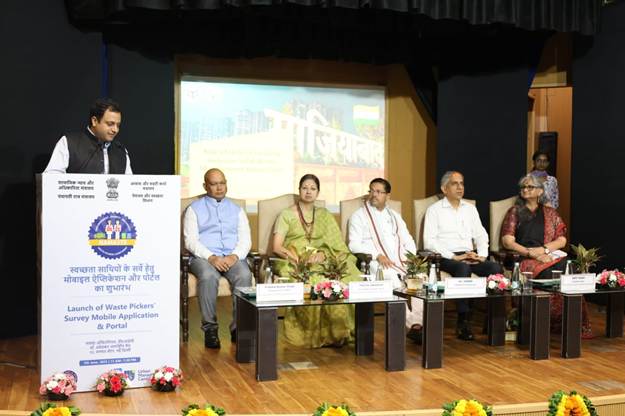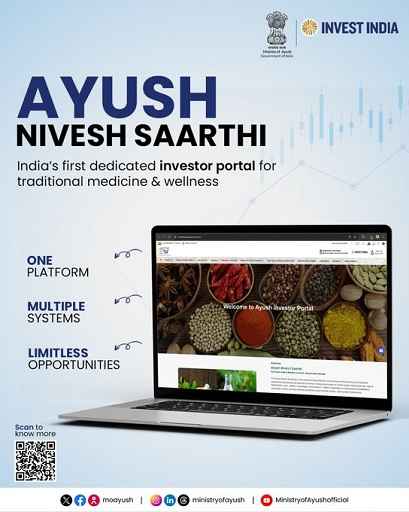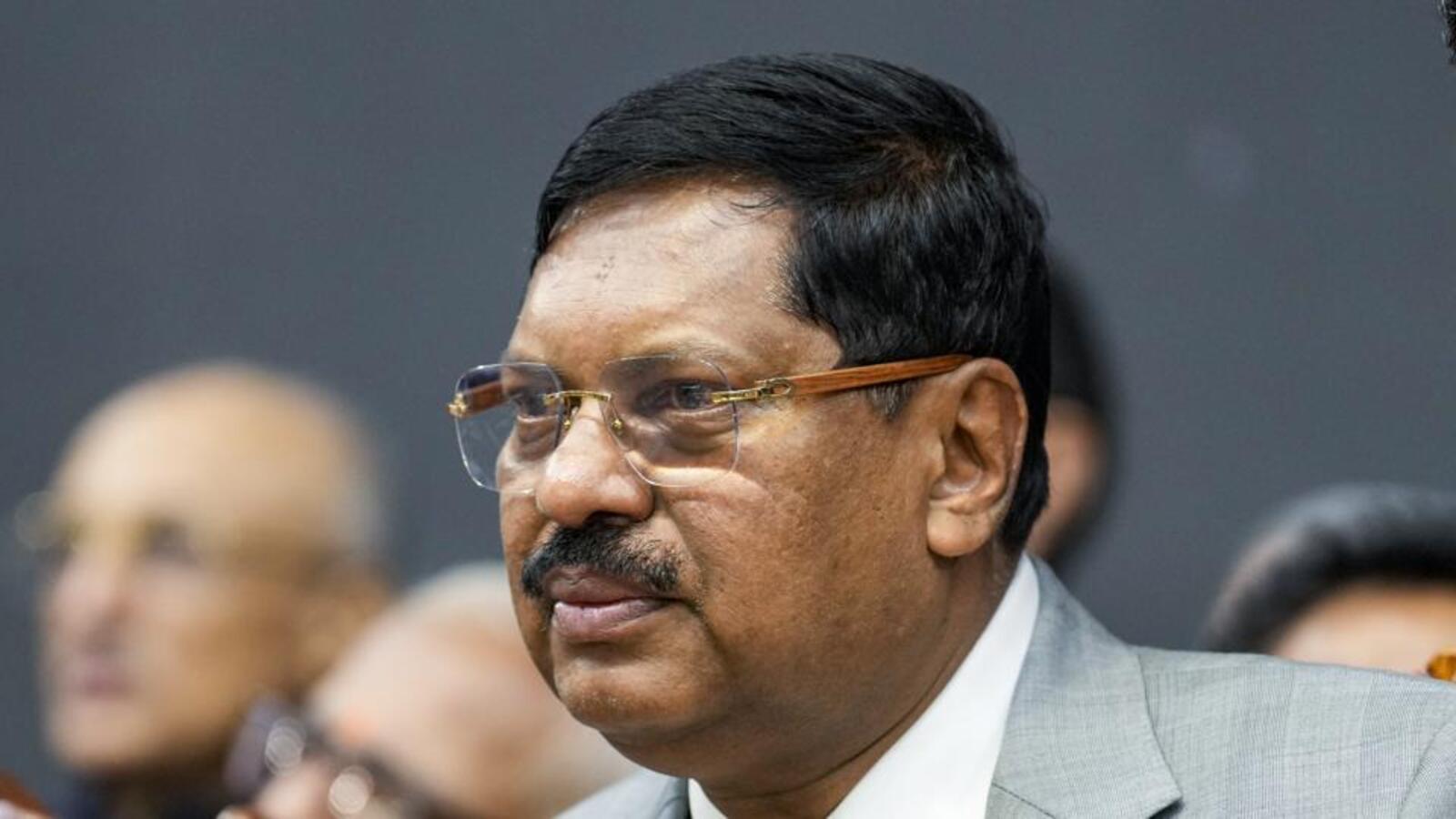Waste Picker Enumeration App

- 06 Jun 2025
In News:
On World Environment Day 2025, the Ministry of Social Justice and Empowerment (MoSJE) launched the Waste Picker Enumeration App under the NAMASTE Scheme, reaffirming the government’s commitment to environmental justice and the dignity of sanitation workers.
What is the NAMASTE Scheme?
- Full Form: National Action for Mechanised Sanitation Ecosystem
- Type: Central Sector Scheme (CSS)
- Launched: July 2023
- Nodal Ministry: Ministry of Social Justice and Empowerment (MoSJE)
- Partner Ministry: Ministry of Housing and Urban Affairs (MoHUA)
- Implementing Agency: National Safai Karamcharis Finance & Development Corporation (NSKFDC)
- Objective: To formalize and rehabilitate sanitation workers and integrate them into formal systems through skilling, social security, and mechanization of hazardous cleaning work.
- Inclusion of Waste Pickers (From June 2024): The NAMASTE Scheme expanded its scope in June 2024 to include Waste Pickers, recognizing their critical role in the circular economy and solid waste management.
Waste Picker Enumeration App – Key Highlights
- Purpose: Digital platform for profiling 2.5 lakh waste pickers across India.
- Recognition: Provides occupational photo ID cards and formal identity to waste pickers.
- Social Security:
- Health coverage under Ayushman Bharat–PM-JAY
- Distribution of PPE kits and seasonal safety gear
- Livelihood & Skilling:
- Skill development programs
- Capital subsidies for waste collection vehicles
- Empowerment:
- Strengthening of Waste Picker Collectives
- Management of 750 Dry Waste Collection Centres (DWCCs) in urban areas
Udhampur-Srinagar-Baramulla Rail Link (USBRL)
- 06 Jun 2025
In News:
The Udhampur-Srinagar-Baramulla Rail Link (USBRL) is a transformative 272-km railway project aimed at connecting the Kashmir Valley to the Indian Railways network. With Prime Minister Narendra Modi inaugurating the Chenab Rail Bridge and flagging off Vande Bharat trains in June 2025, the project nears full operationalization.
Key Details:
Chenab Rail Bridge – World’s Highest Railway Arch Bridge
- Height: 359 metres above riverbed (taller than the Eiffel Tower).
- Length: 1,315 metres; Arch span: 467 metres.
- Status: Highest railway arch bridge in the world.
- Engineering feat in Reasi district, Jammu and Kashmir.
Strategic All-Weather Connectivity
- Reduces dependency on the Srinagar-Jammu highway, which is prone to closure due to snow and landslides.
- Ensures year-round transportation and supply lines.
Enhanced Military Mobility
- Enables rapid movement of troops and equipment to border regions.
- Crucial for national security due to the region's proximity to international borders.
- Designed to withstand blasts and harsh weather.
Anji Bridge – India’s First Cable-Stayed Rail Bridge
- Length: 473 metres; Height: 331 metres.
- Located on the Katra-Banihal section.
- Supported by 48 cables, suitable for rugged Himalayan terrain.
Vande Bharat Connectivity
- High-speed trains introduced on Katra–Srinagar route.
- Improves passenger comfort and reduces travel time.
Economic Boost via Trade
- Improves market access for Kashmiri products: apples, saffron, handicrafts, and dry fruits.
- Facilitates faster freight movement, integrating the region into national trade networks.
Tourism Promotion
- Easier access to religious and scenic sites.
- Expected to boost tourism post disruptions (e.g., Pahalgam incident).
- Cheaper and faster rail travel enhances domestic footfall.
Engineering Resilience
- Chenab Bridge:
- Blast-resistant (withstands up to 40 kg TNT).
- Wind resistant (up to 260 kmph).
- Seismic-resilient with a 120-year design life.
- Symbol of India’s capability in building infrastructure in high-risk zones.
Time Efficiency
- Travel time between Jammu and Srinagar will reduce from 6 hours (by road) to 3–3.5 hours (by rail).
- Facilitates emergency services, logistics, and routine travel.
National Integration and Inclusion
- 943 bridges, 36 tunnels covering 119 km — overcoming Himalayan terrain challenges.
- Integrates remote districts of Jammu & Kashmir into India's railway grid.
- Promotes inclusive development and better governance outreach.
Ayush Nivesh Saarthi

- 06 Jun 2025
In News:
Recently, the Government of India launched the ‘Ayush Nivesh Saarthi’ portal—a digital initiative aimed at positioning India as a global hub for traditional medicine investment. The launch took place during the Ayush Stakeholder/Industry Interaction Meet held at Vanijya Bhawan, New Delhi.
- Developed by: Ministry of Ayush in collaboration with Invest India
Objective of the Portal
- To facilitate investment in India’s Ayush sector through a dedicated digital interface.
- To bring together policy frameworks, incentives, investment-ready projects, and real-time facilitation.
- To strengthen India’s position as a global investment destination for traditional systems of medicine.
Portal Features
- Investor-centric platform integrating:
- Investment promotion schemes
- Real-time data and policy information
- Single-window facilitation
- Supports both domestic and foreign investors
- Offers transparency, ease of access, and sectoral insights
Sectoral Significance
- Growth Rate: The Ayush sector recorded an annual growth rate of 17% (2014–2020).
- Medicinal Wealth: India is home to 8,000+ medicinal plant species.
- Global Recognition: Ayush is among the top five health services in India and contributes significantly to the USD 13 billion Medical Value Travel (MVT) sector.
Investment Facilitation
- 100% Foreign Direct Investment (FDI) is permitted in the Ayush sector through the automatic route.
- The portal aims to attract FDI and empower entrepreneurs through digital governance and investment transparency.
EnviStats India 2025
- 06 Jun 2025
In News:
India's annual mean temperature rise up from 25.05°C in 2001 to 25.74°C in 2024, Electricity generation from renewable sources increased more than three times in 10 years.
- Released by: Ministry of Statistics and Programme Implementation (MoSPI) on June 5, 2025, on the occasion of World Environment Day
- Framework Used: UN's Framework for the Development of Environment Statistics (FDES 2013)
Key Highlights:
Climate Trends
- Annual Mean Temperature rose from 25.05°C (2001) to 25.74°C (2024).
- 2024 recorded as India’s hottest year since 1901; also, globally the hottest year in 175 years.
- Annual Minimum and Maximum Temperatures (2021–24):
- Minimum: 19.32°C → 20.24°C
- Maximum: 30.78°C → 31.25°C
Rainfall Patterns
- Rainfall shows seasonal concentration between June–September, with signs of shifting patterns such as late onset or extended rains into October.
- No clear long-term trend, reflecting erratic monsoonal behaviour.
Energy Generation
Thermal & Renewable Power (2013–14 to 2023–24)
- Thermal: 7.92 lakh GWh → 13.26 lakh GWh
- Renewable: 65,520 GWh → 2.25 lakh GWh, over 3x increase in renewable energy output in a decade.
Biodiversity and Faunal Statistics
Faunal Diversity
- Global Faunal Species: 16,73,627
- India's Share: 1,04,561 species
- Habitat-specific Species in India:
- Soil Ecosystem: 22,404
- Freshwater Ecosystem: 9,436
- Mangrove System: 5,023
- Estuarine Ecosystem: 3,383
- Marine Fauna (India): 20,613 out of global 2,47,605
Fisheries Production
Inland vs. Marine Fish (2013–14 to 2023–24)
- Inland Fish Production: 61 lakh tonnes → 139 lakh tonnes
- Marine Fish Production: 34 lakh tonnes → 45 lakh tonnes
Public Expenditure (2021–22)
- Environment Sustainability Sector: ?2,433 crore (highest among sectors)
- Conservation of Natural Resources: Increasing trend
- Agro-Forestry: Lowest allocation
New Data indicators introduced
- Ramsar sites
- Access to sanitation
- Transport infrastructure
- Electricity access
Bar Council of India permits Foreign Lawyers in India

- 06 Jun 2025
In News:
Chief Justice of India (CJI) B.R. Gavai lauded the Bar Council of India (BCI) for amending rules to allow foreign legal professionals and law firms to advise on non-litigious matters in India.
Key Features of BCI’s Reform (2024 Update to 2022 Rules):
- Scope of Practice for Foreign Lawyers:
- Permitted: Advisory roles in foreign law, international law, and arbitration.
- Prohibited: Appearing in Indian courts/tribunals or advising on Indian law.
- Nature of Work Allowed: Only non-litigious activities.
Rationale Behind the Reform:
- Boosting Arbitration Quality:
- India ranks 5th globally in arbitration case volume (ICC 2024 Report).
- Reform aimed at enhancing arbitration standards via foreign expertise.
- Facilitating Legal Reciprocity:
- Enables Indian lawyers to access international legal markets.
- Promotes mutual recognition and cooperation with foreign bar associations.
- Supporting Institutional Arbitration:
- Benefits centres like:
- Mumbai Centre for International Arbitration (MCIA)
- Delhi International Arbitration Centre (DIAC)
- India International Arbitration Centre (IIAC)
- Benefits centres like:
- Filling Talent Gaps:
- Expertise needed in fields such as:
- Climate litigation
- Technology and data law
- Cross-border commercial arbitration
- Expertise needed in fields such as:
Challenges and Concerns:
- Market Displacement Fears: Indian lawyers worry about reduced share in arbitration and consultancy services.
- Reciprocity Barriers: Unequal treatment in countries with restrictive legal entry norms.
- Uneven Playing Field: Foreign firms possess larger capital, advanced tech, and international clientele.
- Regulatory Oversight Needed: BCI must ensure strict compliance to maintain sovereignty of Indian legal framework.
Significance of the Reform:
- Positioning India as an Arbitration Hub: Enhances India's global legal profile, especially in infrastructure and trade.
- Strengthening Indo-UK Legal Cooperation: Reform highlighted during Indo-UK Arbitration Conference, deepening bilateral ties.
- Modernizing Legal Sector: Brings global legal best practices and innovation to India.
- Upholding Indian Legal Integrity: Complies with the Advocates Act, 1961 – no foreign practice in Indian law.
- Opportunities for Indian Lawyers Abroad: Reciprocity clause allows dual practice in India and foreign jurisdictions.
